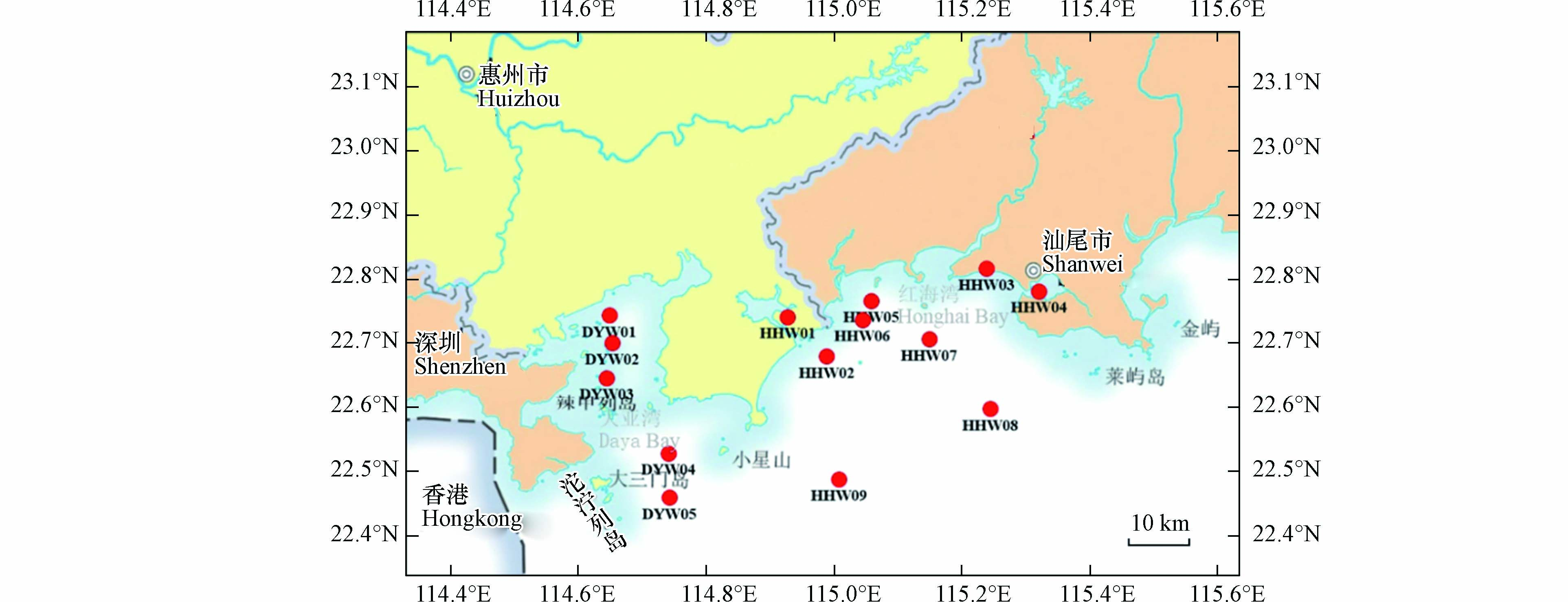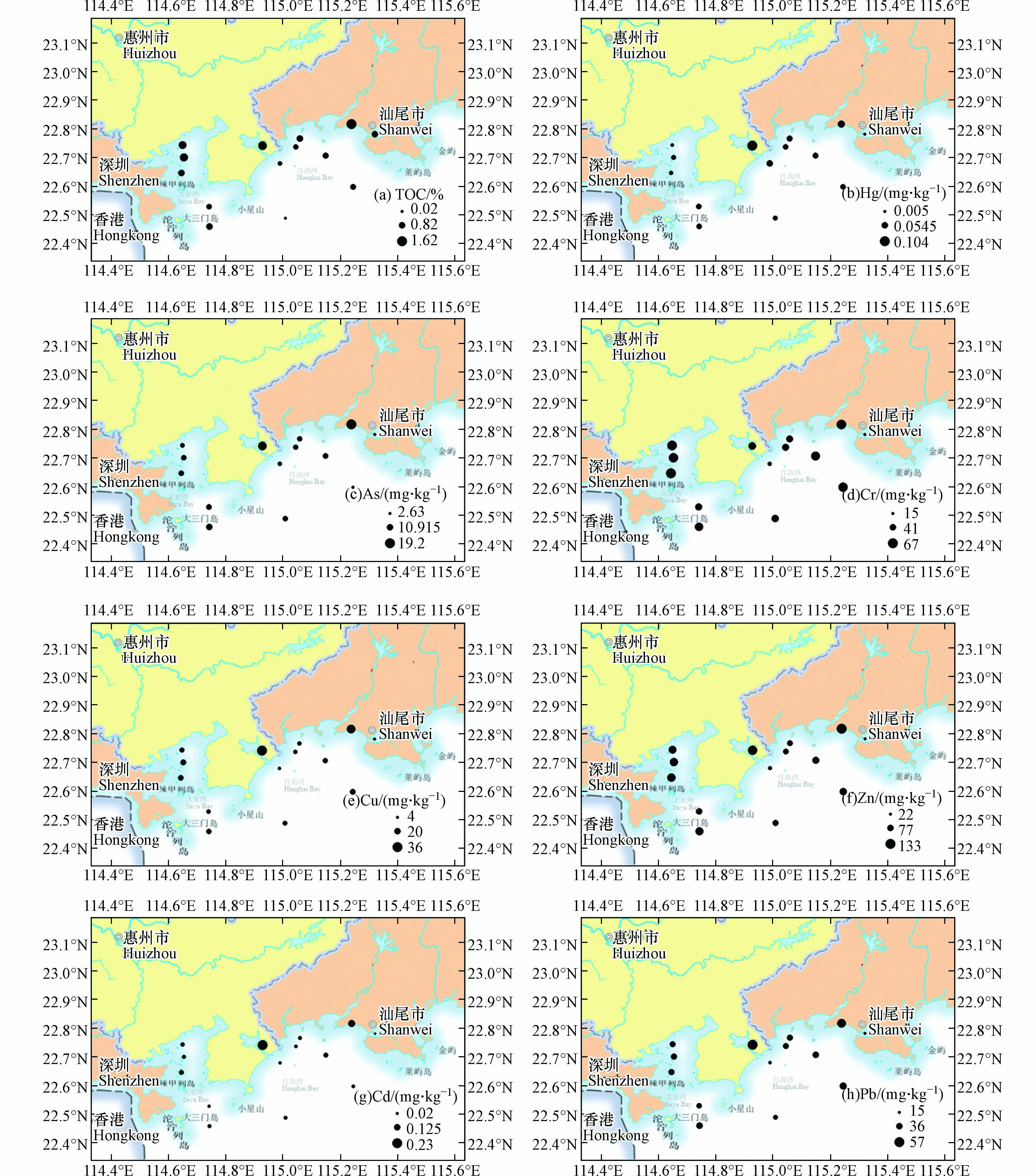我国土壤环境的风险评估技术分析与展望
Analysis and Prospects on Soil Environmental Risk Assessment Technology in China
-
摘要: 随着我国工业化、城镇化及农业高度集约化的快速发展,耕地和场地土壤复合污染问题日益突出,土壤污染的风险日趋显现。本文在总结国内外土壤污染健康风险评估技术发展历程的基础上,探讨我国国内建设用地健康风险评估技术导则的异同点,分析目前国内外有关土壤环境风险评估技术研究的热点与不足,重点介绍了蒸气入侵模型的发展、土壤中有机污染物和重金属健康风险评估方面的研究工作。最后,本文提出根据场地利用场景并结合考虑生物可给性的模型校正开展精细化的土壤环境人体健康风险评估,同时也要加强土壤环境的生态风险评估以及地质高背景区的风险管控。本文为未来场地土壤环境的分级分类管理提供了前瞻性建议。Abstract: With the rapid development of China's industrialization, urbanization and high agricultural intensification, the combined pollution of cultivated land and site soil has become increasingly prominent, and soil pollution risks have become increasingly urgent. This paper summarizes the development history on health risk assessment technology of soil contamination at home and abroad, discusses similarities and differences of domestic health risk assessment technology guidelines for construction land, analyzes the current hotspots and shortcomings of research on soil environmental risk assessment technology at home and abroad with focuses on the development of vapor intrusion models and the research work on health risk assessment of organic pollutants and heavy metals in soil. Finally, this paper proposes to carry out a refined health risk assessment of soil contamination based on site utilization scenarios and bioaccessibility model calibration. At the same time, it is necessary to strengthen the ecological risk assessment of soil contamination, and the risk management and control of high geological background areas. This paper provides forward-looking recommendations for the future hierarchical and classified management of site soil environment.
-
重金属具有蓄积性、持久性以及高毒性等特点,且拥有广泛的来源,主要有河流径流、城镇污水、工业废水以及近海养殖等[1 − 4],现已成为海洋环境中备受关注的重要污染物之一[5]. 作为各种污染物主要的汇[6 − 8],沉积物富集了大量的重金属,并且受海水环境变化的影响,重金属会从沉积物中释放至海水中,不仅影响海水水质,而且易于在水生生物体内富集,通过食物链转移至捕食者或者人体,对人体健康和海洋生态系统造成长期的影响[9 − 10]. 海湾是链接陆地和海洋的重要界面,受到人类活动影响剧烈,是研究重金属污染物发生沉降、输运、转化和埋藏等生物地球化学过程的重要环境. 因此,对海湾沉积物重金属开展研究,分析海洋重金属的污染程度,对海湾环境生态风险评价具有重要的意义[11].
位于惠州市南部的大亚湾,由于海产资源丰富,已成为是中国南方重要的海湾之一[12]. 位于广东省南部的红海湾,凭借丰富的海洋渔业资源,使得海水养殖业发展迅速,已被列为汕尾市经济开发区,同时也是南海半封闭型海湾规模化养殖试验区[13]. 然而,近几十年来,随着这两大海湾区域经济的发展,海洋生态环境状况已遭受人类活动所带来的不同程度的危害[14 − 15],城镇生活污水排放、工业企业污染排放、近海养殖等带来的重金属污染成为该区域面临的主要环境问题[16 − 18]. 例如,杨文超等[18 − 19]对2010—2018年期间大亚湾内表层沉积物中的5类重金属进行研究,发现重金属高值区均集中在石化区一带,推测重金属的主要来源可能是沿岸水产养殖和工业企业排放. 唐得昊等[17]对大亚湾2015年采集的23个表层沉积物种5类重金属分析结果显示,重金属总体污染程度达到了中等污染水平,汞(Hg)是潜在风险最高的. 孙钦帮等[15]2015年对红海湾近岸表层沉积物中7类重金属的分析,发现海域沉积物重金属 Cu、Pb、Zn、Cr和As的主要来源为工业废水与城市污水. 尽管前人对该区域重金属开展了不少研究,但是一方面随着经济发展和人口增加会加剧海洋沉积物污染程度,另外一方面,随着国民海洋环保理念不断增强和国家层面海洋环保政策不断完善,使得已有的报道不能充分反映大亚湾和红海湾沉积物中重金属的生态风险状况.
本研究以大亚湾和红海湾为研究靶区域,采集表层沉积物并分析其中7种重金属含量,分别为砷(As)、锌(Zn)、镉(Cd)、铜(Cu)、铬(Cr)、汞(Hg)和铅(Pb),研究了重金属的空间分布,并推断其潜在来源. 此外,结合潜在生态风险评价法,对沉积物中重金属的污染程度进行评价,以期为改善大亚湾和红海湾海洋环境质量、建立美丽海湾建设提供科学理论依据.
1. 材料与方法(Material and methods)
1.1 研究区域与样品采集
研究区域位于大亚湾和红海湾近岸(图1),大亚湾和红海湾均属于半封闭海湾,水动力条件整体偏弱. 相对于大亚湾,红海湾更开阔,与近海水体交换面积更大,使得红海湾湾内污染物相对难保存,人类活动产生的污染物相对更容易被运移.
2021年9月,利用抓斗采泥器,分别在大亚湾(DYW01—DYW05)和红海湾海域(HHW01—HHW09)采集了14个表层沉积物,详细站位见图1. 将各站位沉积物表层未扰动的0—2 cm沉积物分别放入洁净聚乙烯瓶中,贴上提前打印好的标签,之后将样品运回实验室−20 ℃冻存. 严格按照《海洋监测规范》(GB17378—2007) 要求,采集、保存和运输沉积物样品.
1.2 样品的处理及分析检测
本研究严格按照《海洋监测规范第 5 部分:沉积物分析》(GB 17378.5-2007)开展实验,对沉积物样品进行前处理及分析检测. 前处理步骤如下:取一部分沉积物样品置于洁净的环境,在室温下自然干燥,筛除沉积物中的杂质(如石头等大颗粒物),用研钵研碎沉积物,过100目网筛,待测重金属含量;另一部分沉积物样品进行冷冻干燥,待测总有机碳.
重金属测定方法:取一定量的前处理好的沉积物样品,加入到HCl-HNO3-HF-HClO4中,用石墨消解仪进行消解、定容. 样品中Hg和As采用原子荧光光谱法(原子荧光光度计BAF-2000),Cr、Cu、Zn、Cd和Pb采用电感耦合等离子体质谱法(电感耦合等离子体质谱仪ICP-MS). Hg、As、Cr、Cu、Zn、Cd和Pb的检测限分别为0.002、0.01、0.4 g、0.3、0.6、0.03 、2.0 mg·kg−1.
总有机碳测定方法:按照海洋监测规范第5部分沉积物分析(有机碳重铬酸钾氧化-还原容量法)(GB 17378.5-2007),有机碳含量的分析采用的是重铬酸钾氧化硫酸亚铁滴定法,检出限为0.01%.
1.3 重金属污染评价方法
1.3.1 单因子污染指数法
按照《海洋沉积质量标准》(GB 18668-2002),将沉积物分为三类,分别是第一类、第二类和第三类沉积物(表1),对砷、锌、镉、铜、铬、汞和铅开展单因子污染评价分析[3],计算如式(1)。
表 1 我国海洋沉积物中重金属含量的标准值Table 1. The standard values of heavy metals in marine sediments of China指标Index 海洋沉积物质量标准值/( mg·kg−1)Standard value of marine sediment As Cd Cr Cu Hg Pb Zn 第Ⅰ类 Class Ⅰ 20 0.5 80 35 0.2 60 150 第Ⅱ类 Class Ⅱ 65 1.5 150 100 0.5 130 350 第Ⅲ类 Class Ⅲ 93 5 270 200 1 250 600 Cim=CiCin (1) 其中,重金属i的污染指数用Cim表示;实测浓度(mg·kg−1)用Ci表示,Cin是沉积物重金属评价标准值. 当沉积物判定为污染程度低时,Cim是≤1,其含量满足第一类标准;当沉积物重金属含量超过第一类标准评价时,Cim>1;当沉积物重金属为中等污染程度时,1<Cim≤3;当沉积物重金属为重污染程度时,3<Cim≤6;当沉积物重金属为严重污染程度时,Cim>6.
1.3.2 沉积物重金属的潜在生态风险评价
根据瑞典科学家 Hakanson 提出的潜在生态风险指数法,本研究对沉积物开展重金属污染研究,并推断其潜在生态风险评价[20]. 结合不同地域环境背景重金属差异,Hakanson法依据沉积物中重金属浓度及毒性响应特征和污染物类型,不仅能够实现对某一特定环境下单一重金属对环境的影响的评估,而且能实现对多种重金属对环境影响的综合效应的评价,从而实现对重金属的潜在生态风险程度划分的定量分析. 因此,该方法在海洋沉积物重金属风险评价中广泛应用[3, 17, 19]. 具体公示如(2)和(3):
Cf=∑niCim (2) RI=∑niEir=∑niTir×∑niCif (3) 其中,Cim代表某种重金属i的污染指数;Cf代表某种重金属的综合污染系数;Pi代表沉积物重金属总体污染指数;Eir表示某一重金属i的潜在生态风险指数;RI是潜在生态风险指数;Cin为沉积物中重金属i的参考值(mg·kg−1). 重金属背景值往往具有较强区域特征,受多种因子影响,一方面受生物因子干扰(如生物活动),另一方面受非生物过程影响(如水文地质)等多种外在因素的影响. 本研究采用广东省沿海沉积物含量为背景值,As、Cd、Cr、Cu、Hg、Pb 和 Zn含量分别为13、0.14、106、15.5、0.122、30、63.3 mg·kg−1 [21 − 22];沉积物中某种重金属i的毒性系数使用Tir来表示,代表该重金属毒性水平及生物对该重金属污染的敏感度,本研究标准化重金属的毒性系数是采用Hakanson制定,汞、铅、砷、镉、铬、铜和锌毒性系数分别为40、5、10、30、2、5和5(表2).
表 2 沉积物中重金属污染程度及潜在生态危害程度分类Table 2. Contaminant grades and potential ecological hazard levels of heavy metals in sedimentEir 单个重金属潜在生态危害程度Potential ecological hazard of single metal RI 重金属总体潜在生态危害程度Overall potential ecological hazard of metals ≤50 低等 ≤150 低等 40—80 中等 150—300 中等 80—160 较重 300—600 较重 160—320 重度 600—1200 重度 >320 极严重 >1200 极严重 2. 结果与讨论(Results and discussion)
2.1 表层沉积物重金属含量和分布特征
大亚湾和红海湾7种重金属含量及分布特征见图2和表3. 大亚湾Hg、As、Cr、Cu、Zn、Cd 和 Pb含量分别为0.01—0.04、6.59—10.9、45.9—67.4、10.9—16.6、78.1—109.0、0.03—0.08和30.2—36.6 mg·kg−1, 平均值分别为0.03、8.71、59.78、14.2、99.4、0.05、33.4 mg·kg−1, 这与杨文超等[18 − 19]和唐得昊等[17]研究者的结果基本相当. 大亚湾Hg、As含量从近岸到远岸略有增加,Cr、Cu和Zn含量从近岸到远岸呈降低趋势,Cd和Pb在空间分布上没有差异. 在大亚湾内,这7 种重金属含量在空间上不同的分布规律,说明不同重金属含量在地域上存在差异,这可能是由于受沉积物的来源和输运过程等影响. 与文献中2015年和2018年沉积物结果对比[18-19],发现近年来Hg、Cr和Cu含量明显降低,这可能与“十三五”期间国家层面推动实施一系列海洋环境保护政策有关,改善了海洋环境质量,而As和Zn含量略有波动增大,Pb没有明显变化,这3种重金属含量均满足第I类沉积物标准 (表3),表明表层沉积物污染程度低,属于正常波动.
红海湾Hg、As、Cr、Cu、Zn、Cd 和 Pb含量分别为0.005—0.104、2.63—19.2、14.4—65.2、3.4—36.1、21.7—133.0、0—0.23、14.5—57 mg·kg−1,平均值分别为0.049、9.03、46.29、15.4、77.7、0.07、34.1 mg·kg−1, 与孙钦帮等[15]的结果基本相当. 除重金属Cr之外,其他重金属含量分布特征为远岸明显低于近岸,近岸的HHW01和HHW03站位重金属含量较高,可能受人类活动影响显著,远岸站位可能与南海水体交换频繁,重金属较难保存,且外海陆源污染较少. 与文献中2015年沉积物结果对比,发现本研究红海湾重金属含量明显增大(表3),表明近年来,红海湾重金属呈现一定程度富集.
整体而言,红海湾重金属Hg、As、Cu、Cd和Pb含量明显高于大亚湾的,而红海湾的Cr和Zn含量低于大亚湾的,可能由于沉积物重金属具有不同来源和不同输运过程,造成了这种空间分布差异. 对比其他区域的研究(表3),本研究中两个湾区沉积物中的重金属含量明显低于深圳湾、大鹏湾和珠江口,也低于广东省近岸沉积物重金属含量,然而却高于北部湾的重金属含量. 不同海湾重金属含量的差异,与海湾的经济发展有密切关系,经济发达的海湾重金属含量相对高,经济落后的湾区重金属含量相对较低,这与张起源等[27]研究结果一致.
表 3 大亚湾和红海湾沉积物中重金属含量及其他区域对比(mg·kg−1)Table 3. Comparison of heavy metals in surface sediments of Daya Bay, Honghai Bay and other bays(mg·kg−1)区域Zone 数据统计Data statistics 汞(Hg) 砷(As) 铬(Cr) 铜(Cu) 锌(Zn) 镉(Cd) 铅(Pb) 采样时间 Sampling time 参考文献Reference 大亚湾Daya Bay 最小值 0.01 6.59 45.9 10.9 78.1 0.03 30.2 2021.09 本研究 最大值 0.04 10.9 67.4 16.6 109 0.08 36.6 平均值 0.03 8.71 59.78 14.2 99.4 0.05 33.4 标准偏差 0.01 1.38 7.91 2.0 11.1 0.02 2.10 I 类沉积物数量 5 5 5 5 5 5 5 红海湾Honghai Bay 最小值 0.005 2.63 14.4 3.4 21.7 0.00 14.5 最大值 0.104 19.2 65.2 36.1 133 0.23 57.0 平均值 0.049 9.03 46.3 15.4 77.7 0.07 34.1 标准偏差 0.025 5.19 16.2 10.3 33.8 0.07 13.1 1类沉积物数量 9 9 9 8 9 9 9 大亚湾 Daya Bay 平均值 0.04 7.35 — 18.9 83.1 — 33.2 2018.12 [18 − 19] 大亚湾 Daya Bay 平均值 0.12 6.78 — 22.8 81.9 — 31.7 2015.01 [18 − 19] 大亚湾 Daya Bay 平均值 0.10 43.1 23.6 88.6 — 33.2 2015.10 [17] 红海湾 Honghai Bay 平均值 0.07 7.97 15.32 6.29 57.9 0.03 25.4 2015.05 [15] 深圳湾 Shenzhen Bay 平均值 — 23.2 — 79.3 307 2.26 74.5 2012.11 [23] 大鹏湾 Dapeng Bay 平均值 0.05 — 63.6 15.7 87.1 — 35.9 1998—2006 [24] 珠江口 Pearl River Estuary 平均值 — — — 348 383 1.72 103 2007.07 [25] 广东省近岸Coast of Guangdong Province 平均值 0.13 20.8 — 43.8 140 0.38 44.3 2008.01 [26] 北部湾Beibu Gulf 平均值 0.03 3.73 — 11.2 27.8 0.06 18.9 2018.08 [3] “—”:没有数据. “—”: No data. 2.2 表层沉积物重金属污染与TOC的关系
由于TOC对重金属具有极强的富集和络合作用,研究者常利用TOC含量与重金属含量之间的相关性分析,对重金属的来源进行初步判断[3, 17-18]. 本研究,大亚湾沉积物中TOC含量为0.63%—1.21%(均值为0.93%),红海湾沉积物中的为0.39%—1.62%(均值为0.87%),将大亚湾和红海湾沉积物中7种重金属含量与沉积物TOC含量进行了相关性分析,具体结果如下所示(表4).
表 4 大亚湾和红海湾沉积物重金属之间及与TOC之间的相关分析Table 4. Correlation between heavy metals and TOC in sediments of Daya Bay and Honghai BayTOC 汞 砷 铬 铜 锌 镉 铅 TOC 1 汞 0.31 1 砷 0.588* 0.71** 1 铬 0.41 0.09 0.37 1 铜 0.68* 0.74** 0.82** 0.54* 1 锌 0.66* 0.44 0.71** 0.87** 0.85** 1 镉 0.60* 0.80** 0.81** 0.38 0.94** 0.71** 1 铅 0.65* 0.72** 0.75** 0.66* 0.94** 0.88** 0.86** 1 *在0.05水平上显著相关;**在0.01水平上显著相关. *Significantly correlated at the 0.05 level; **Significantly correlated at the 0.01 level. 沉积物中TOC含量与As、Cu、Zn、Cd和Pb含量分别具有显著正相关关系,表明沉积物中TOC的含量会影响这些重金属元素的富集;然而Hg和Cr与TOC没有显著相关关系,表明这两种重金属在沉积物富集受TOC影响较小,可能受人为输入以及其自身的赋存状态影响大. 由此可见,TOC含量影响了部分重金属的分布. 其中,Cu与TOC的相关系数最大,这表明了Cu更易与TOC形成络合物,富集在沉积物中.
此外,除了Cr分别与Hg、As、Cd没有显著相关性外,其他重金属两两之间均具有显著相关性,推测沉积物中不同重金属之间可能具有同源性,也可能代表了重金属之间具有类似的沉积物输运过程以及相似的空间分布规律;而Cr的来源和自身赋存状态可能与其他重金属有所不同. 相比其他金属,Cr元素来源可能受人为输入的影响较大. 此外,与其他重金属相比,在沉积物中Cr元素主要以残渣态形式存在,主要分布在原生和次生硅酸盐矿物晶格中, 性质稳定, 难以迁移和被生物利用.
2.3 表层沉积物重金属污染程度分析
对大亚湾和红海湾中沉积物重金属含量进行单因子分析,发现大亚湾内所有沉积物的重金属污染因子均<1,表明污染程度低,满足第I类沉积物标准;然而红海湾内,仅有HHW01站位Cu的污染因子超过1,属于中度污染程度,其余站位重金属污染因子均小于1,污染程度低,满足第I类沉积物标准. 大亚湾表层沉积物重金属单因子污染指数在0.06—0.84之间,平均值为0.44±0.23;红海湾的为0.00—1.03之间,平均值为0.42±0.26. 综合大亚湾和红海湾的结果,重金属污染指数平均值大小为Cr>Zn>Pb>As>Cu>Pb>Cd,推测Cr、Zn和Pb是湾区沉积物中主要的环境污染因子. 大亚湾的综合污染指数(Cf)平均值为3.07±0.26,而红海湾Cf平均值为2.95±1.33,其中红海湾近岸的HHW01和HHW03站位的Cf值较高. 除了HHW01站位Cf高于5,属于中等污染水平外,其余站位均低于5,污染较低.
2.4 重金属潜在生态风险评价
评价本研究中两个湾区重金属潜在生态风险,获得了2项生态风险指标(表5),分别是单个重金属潜在生态风险指数和综合生态风险指数.
表 5 大亚湾和红海湾表层沉积物重金属单因子污染指数、综合污染指数、潜在单个重金属生态风险系数和总体生态风险指数Table 5. Single factor pollution index (Cim), comprehensive pollution index (Cf), potential ecological hazard coefficients (Eir), and risk indices (RI) of heavy metals in surface sediments of Daya Bay and Honghai Bay站位Station Cim Cf Eir RI As Cd Cr Cu Hg Pb Zn As Cd Cr Cu Hg Pb Zn DYW01 0.33 0.12 0.82 0.39 0.07 0.54 0.67 2.93 5.07 12.9 1.24 4.35 9.18 5.38 1.58 39.7 DYW02 0.42 0.10 0.79 0.47 0.17 0.57 0.71 3.23 6.42 10.7 1.20 5.35 21.6 5.70 1.67 52.7 DYW03 0.44 0.16 0.84 0.45 0.12 0.56 0.73 3.29 6.7 17.1 1.27 5.03 15.1 5.60 1.72 52.6 DYW04 0.45 0.06 0.57 0.31 0.21 0.50 0.52 2.63 6.95 6.43 0.87 3.52 27.5 5.03 1.23 51.6 DYW05 0.55 0.10 0.70 0.41 0.21 0.61 0.69 3.28 8.38 10.7 1.06 4.68 27.5 6.10 1.64 60.1 HHW01 0.81 0.46 0.63 1.03 0.52 0.95 0.82 5.22 12.5 49.3 0.95 11.6 68.2 9.5 1.94 154 HHW02 0.32 0.06 0.31 0.17 0.28 0.29 0.27 1.69 4.92 6.43 0.46 1.87 36.1 2.92 0.63 53.3 HHW03 0.96 0.28 0.82 0.87 0.32 0.84 0.89 4.97 14.8 30.0 1.23 9.81 42 8.35 2.1 108.2 HHW04 0.13 0.00 0.18 0.10 0.03 0.24 0.14 0.82 2.02 0.00 0.27 1.1 3.3 2.42 0.34 9.4 HHW05 0.41 0.10 0.56 0.29 0.24 0.56 0.45 2.61 6.36 10.7 0.84 3.23 31.5 5.63 1.07 59.3 HHW06 0.41 0.08 0.57 0.29 0.21 0.54 0.44 2.53 6.36 8.57 0.86 3.23 26.9 5.38 1.03 52.3 HHW07 0.45 0.16 0.75 0.41 0.23 0.60 0.58 3.18 6.88 17.1 1.14 4.61 30.2 6.00 1.36 67.3 HHW08 0.14 0.08 0.79 0.47 0.21 0.66 0.61 2.97 2.17 8.57 1.2 5.35 26.9 6.63 1.45 52.3 HHW09 0.43 0.10 0.60 0.35 0.17 0.44 0.47 2.56 6.58 10.7 0.91 3.94 22.3 4.38 1.12 49.9 均值 average 0.45 0.13 0.64 0.43 0.21 0.56 0.57 — 6.86 14.23 0.96 4.83 27.73 5.64 1.35 — “—”:没有数据. “—”: No data. 大亚湾Hg、As、Cr、Cu、Zn、Cd 和 Pb的潜在风险系数平均值为6.70、11.6、1.13、4.59、20.2、5.56和1.57,表明重金属潜在生态风险水平较低,相对而言,Hg潜在风险程度最高,其次是Cd和As.
红海湾Hg、As、Cr、Cu、Zn、Cd 和 Pb的潜在风险系数平均值为6.95、15.7、0.87、4.97、31.9、5.69和1.23,表明重金属潜在生态风险水平较低,与大亚湾重金属的风险水平相同. 其中,红海湾HHW01站位Cd和Hg的潜在风险系数分别为49.3和68.2,属于中等危害程度.
通过对红海湾和大亚湾的重金属综合潜在生态风险指数计算,发现两个湾区的指数均<150,属于低等潜在风险水平. 以上研究表明,随着我国不断加强海洋生态环境治理,已经取得较为理想的成效,近年来沉积物污染程度有降低的趋势. 但是,随着大亚湾和红海湾经济区工业化和城市化的不断发展,以及人口的不断聚集,该区域污染程度和潜在生态风险程度未来可能还会增大,仍需要继续加强监管.
3. 结论(Conclusion)
1)大亚湾Hg、As含量近岸低于远岸,Cr、Cu和Zn含量近岸高于远岸,Cd和Pb近岸和远岸相差不大. 除重金属Cr之外,红海湾其他重金属含量近岸明显高于远岸. 这表明大亚湾重金属来源可能较为复杂,而红海湾重金属来源较为一致,主要来自于陆源输入.
2)红海湾重金属Hg、As、Cu、Cd和Pb含量明显高于大亚湾的,而红海湾的Cr和Zn含量低于大亚湾的. 与历史数据相比,大亚湾近年来Hg、Cr和Cu含量明显降低,而As和Zn含量有增大的趋势,Pb没有明显变化,而红海湾重金属有明显富集. 与其他区域相比,大亚湾和红海湾沉积物中重金属含量处于较低水平.
3)大亚湾和红海湾沉积物中TOC与As、Cu、Zn、Cd和Pb呈良好的线性正相关关系,揭示了TOC含量影响了这些重金属元素在沉积物中的富集;然而Hg和Cr与TOC没有显著相关关系,表明这两种重金属在沉积物富集受TOC影响较小,这可能与该2种元素自身的赋存状态有关.
4)红海湾和大亚湾重金属综合潜在生态风险分析显示,该区域低等潜在风险水平. 但是红海湾局部近岸站位Cd和Hg的潜在风险系数较高,属于中等危害程度.
-
罗泽娇, 贾娜, 刘仕翔, 等. 我国污染场地土壤风险评估的局限性[J]. 安全与环境工程, 2015, 22(5):40-46 ,58 Luo Z J, Jia N, Liu S X, et al. Limitations of risk assessment on contaminated site soil in China[J]. Safety and Environmental Engineering, 2015, 22(5):40-46,58(in Chinese)
中华人民共和国环境保护部. 污染场地风险评估技术导则(发布稿):HJ 25.3-2014[S]. 北京:中华人民共和国环境保护部, 2014 中华人民共和国生态环境部. 土壤环境质量建设用地土壤污染风险管控标准(试行):GB 36600-2018[S]. 北京:中华人民共和国生态环境部, 2018 中华人民共和国生态环境部. 土壤环境质量农用地土壤污染风险管控标准(试行):GB 15618-2018[S]. 北京:中华人民共和国生态环境部, 2018 中华人民共和国生态环境部. 污染地块风险管控与土壤修复效果评估技术导则(试行):HJ 25.5-2018[S]. 北京:中华人民共和国生态环境部, 2018 中华人民共和国生态环境部. 建设用地土壤污染风险评估技术导则:HJ 25.3-2019[S]. 北京:中华人民共和国生态环境部, 2019 王立婷, 刘仁志. 土壤污染风险评价研究进展[J]. 中国环境管理, 2020, 12(2):62-68 Wang L T, Liu R Z. Research progress on soil pollution risk assessment[J]. Chinese Journal of Environmental Management, 2020, 12(2):62-68(in Chinese)
王蕊, 陈明, 陈楠, 等. 基于总量及形态的土壤重金属生态风险评价对比:以龙岩市适中镇为例[J]. 环境科学, 2017, 38(10):4348-4359 Wang R, Chen M, Chen N, et al. Comparision of ecological risk assessment based on the total amount and speciation distribution of heavy metals in soil:A case study for Longyan City, Fujian Province[J]. Environmental Science, 2017, 38(10):4348-4359(in Chinese)
王美娥, 丁寿康, 郭观林, 等. 污染场地土壤生态风险评估研究进展[J]. 应用生态学报, 2020, 31(11):3946-3958 Wang M E, Ding S K, Guo G L, et al. Advances in ecological risk assessment of soil in contaminated sites[J]. Chinese Journal of Applied Ecology, 2020, 31(11):3946-3958(in Chinese)
National Research Council. Risk Assessment in the Federal Government:Managing the Process[M]. Washington DC:National Academies Press, 1983:1-205 Epa U U. Guidelines for exposure assessment[J]. Risk Assessment Forum, 1992, 57(104):22888-22938 United States Environmental Protection Agency (US EPA). A Framework for Assessing Health Risks of Environmental Exposures to Children[R]. Washington DC:US EPA, 2006 United States Environmental Protection Agency (US EPA). Exposure Factors Handbook[R]. Washington DC:US EPA, 1997 李志博, 骆永明, 宋静, 等. 土壤环境质量指导值与标准研究Ⅱ·污染土壤的健康风险评估[J]. 土壤学报, 2006, 43(1):142-151 Li Z B, Luo Y M, Song J, et al. Study on soil environmental quality guidelines and standardsⅡ. Health risk assessment of polluted soils[J]. Acta Pedologica Sinica, 2006, 43(1):142-151(in Chinese)
中华人民共和国生态环境部. 《环境健康风险评估技术指南总纲(征求意见稿)》编制说明[S]. 北京:中华人民共和国生态环境部, 2018 International Association for Testing Materials (ASTM International). Standard Guide for Risk-Based Corrective Action[S]. West Conshohocken:ASTM International, 2000 United States Environmental Protection Agency (US EPA). Risk Assessment Guidance for Superfund (RAGS):Part A:Human health evaluation manual[R]. Washington DC:Office of Emergency and Remedial Response, US EPA, 1989 United States Hazardous Site Control Division, United States Environmental Protection Agency (US EPA). Soil Screening Guidance:User's Guide[M]. Washington DC:Office of Solid Waste and Emergency Response, US EPA, 1996:1-92 United States Environmental Protection Agency (US EPA). Draft guidance for evaluating the vapor intrusion to indoor air pathway from groundwater and soils (subsurface vapor intrusion guidance)[J]. Federal Register, 2002, 67(230):71169-71172 United States Environmental Protection Agency (US EPA). Risk Assessment Guidance for Superfund (RAGS):Part B:Development of risk-based preliminary remediation goals[R]. Washington DC:Office of Emergency and Remedial Response, US EPA, 1991 United States Environmental Protection Agency (US EPA). Risk Assessment Guidance for Superfund (RAGS):Part C:Risk-evaluation of remedial alternatives[R]. Washington DC:Office of Emergency and Remedial Response, US EPA, 1991 United States Environmental Protection Agency (US EPA). Risk Assessment Guidance for Superfund (RAGS):Part D:Standardized planning, reporting, and review of superfund risk assessments[R]. Washington DC:Office of Emergency and Remedial Response, US EPA, 2001 United States Environmental Protection Agency (US EPA). Risk Assessment Guidance for Superfund (RAGS):Part E:Supplemental guidance for dermal risk assessment[R]. Washington DC:Office of Superfund Remediation and Technology Innovation, US EPA, 2004 United States Environmental Protection Agency (US EPA). Risk Assessment Guidance for Superfund (RAGS):Part F:Supplemental guidance for inhalation risk assessment[R]. Washington DC:Office of Superfund Remediation and Technology Innovation, US EPA, 2009 Martin I, Cowie C. Compilation of data for priority organic pollutants for derivation of soil guideline values[R]. London:Environment Agency, 2008 Hosford M. Human Health Toxicological Assessment of Contaminants in Soil[M]. London:Environment Agency, 2009:1-79 Department for Environment, Food and Rural Affairs (DEFRA) and Environment Agency (EA). The Contaminated Land Exposure Assessment (CLEA) Model:Technical Basis and Algorithms[M]. R&D Publication CLR, 2002:1-200 Canadian Council of Ministers of the Environment, Subcommittee on Environmental Quality Criteria for Contaminated Sites. A protocol for the derivation of environmental and human health soil quality guidelines[R]. Ottawa:Canadian Council of Ministers of the Environment, 1996 陈梦舫, 韩璐, 罗飞. 污染场地土壤与地下水风险评估方法学[M]. 北京:科学出版社, 2017:5-10 Piet O, Lijzen J, Swartjes F, et al. Evaluation and revision of the CSOIL parameter set. Proposed parameter set for human exposure modelling and deriving Intervention Values for the first series of compounds[R]. Bilthoven:National Institute for Public Health and the Environment (RIVM), 2001 D'Aprile L, Tatàno F, Musmeci L. Development of quality objectives for contaminated sites:State of the art and new perspectives[J]. International Journal of Environment and Health, 2007, 1(1):120-141 骆永明, 夏家淇, 章海波, 等. 中国土壤环境质量基准与标准制定的理论和方法[M]. 北京:科学出版社, 2015:13-20 American Society for Testing and Materials. Standard Guide for Risk-Based Corrective Action Applied at Petroleum Release Sites[S]. Washington DC:American Society for Testing and Materials, 1995 American Society for Testing and Materials. Standard Guide for Developing Conceptual Site Models for Contaminated Sites[M]. Washington DC:American Society for Testing and Materials, 1995:1-200 北京市生态环境局. 建设用地土壤污染状况调查与风险评估技术导则:DB11/T 656-2019[S]. 北京:北京市市场监督管理局, 2019 北京市生态环境局. 场地土壤环境风险评价筛选值:DB11/T 811-2011[S]. 北京:北京市质量技术监督局, 2011 上海市环境保护局. 上海市污染场地风险评估技术规范[S]. 上海:上海市环境保护局, 2014 上海市环境保护局. 上海市场地土壤环境健康风险评估筛选值(试行)[S]. 上海:上海市环境保护局, 2015 重庆市环境保护局. 重庆场地环境调查与风险评估技术导则:DB50/T 725-2016[S]. 重庆:重庆市质量技术监督局, 2016 浙江省生态环境厅. 污染场地风险评估技术导则(征求意见稿):DB33/T[S]. 杭州:浙江省市场监督管理局, 2019 林晓峰, 蔡兆亮, 胡恭任. 土壤重金属污染生态风险评价方法研究进展[J]. 环境与健康杂志, 2010, 27(8):749-751 Lin X F, Cai Z L, Hu G R. Research progress on ecological risk assessment methods for heavy metal contamination in soil[J]. Journal of Environment and Health, 2010, 27(8):749-751(in Chinese)
李春平, 张峰, 马烈. 污染场地风险评估技术方法比较分析[J]. 中国资源综合利用, 2015, 33(7):47-52 Li C P, Zhang F, Ma L. Comparative analysis of risk assessment technical methods for contaminated sites in China[J]. China Resources Comprehensive Utilization, 2015, 33(7):47-52(in Chinese)
中华人民共和国生态环境部. 土壤环境质量建设用地土壤污染风险管控标准(试行)(征求意见稿)编制说明[S]. 北京:中华人民共和国生态环境部, 2018 刘德成, 李玉倩, 郑纯静, 等. 土壤重金属污染风险评价方法对比研究[J]. 河北农业科学, 2020, 24(4):89-95 Liu D C, Li Y Q, Zheng C J, et al. Comparative study on risk assessment methods of heavy metal pollution in soil[J]. Journal of Hebei Agricultural Sciences, 2020, 24(4):89-95(in Chinese)
中华人民共和国国土资源部, 中华人民共和国水利部. 地下水质量标准:GB/T14848[S]. 北京:中华人民共和国国家质量监督检验检疫总局, 中华人民共和国国家标准化管理委员会, 2017 广东省环境保护厅. 土壤重金属风险评价筛选值珠江三角洲[S]. 广州:广东省质量技术监督局, 2014 重庆市环境保护局. 场地土壤环境风险评估筛选值[S]. 重庆:重庆市质量技术监督局, 2016 香港环境保护署. 按风险厘定的土壤污染整治标准的使用指引[S]. 香港:香港环境保护署, 2007 辽宁省生态环境厅. 辽宁省污染场地风险评估筛选值[S]. 沈阳:辽宁省市场监督管理局, 辽宁省生态环境厅, 2019 深圳市生态环境局. 深圳市建设用地土壤污染风险筛选值和管制值(试行)[S]. 深圳:深圳市市场监督管理局, 2020 澳门环境保护局. 土地污染评估指引[S]. 澳门:澳门环境保护局, 2019 肖庆文. 蒸气入侵国内外研究现状与展望[J]. 环境科技, 2018, 31(2):74-78 Xiao Q W. Research advances in vapor intrusion of contaminated sites[J]. Environmental Science and Technology, 2018, 31(2):74-78(in Chinese)
马杰. 污染场地VOCs蒸气入侵风险评估与管控[M]. 北京:科学出版社, 2020:210-250 Johnson P C, Ettinger R A. Heuristic model for predicting the intrusion rate of contaminant vapors into buildings[J]. Environmental Science & Technology, 1991, 25(8):1445-1452 DeVaull G E. Indoor vapor intrusion with oxygen-limited biodegradation for a subsurface gasoline source[J]. Environmental Science & Technology, 2007, 41(9):3241-3248 Jury W A, Russo D, Streile G, et al. Evaluation of volatilization by organic chemicals residing below the soil surface[J]. Water Resources Research, 1990, 26(1):13-20 Little J C, Daisey J M, Nazaroff W W. Transport of subsurface contaminants into buildings[J]. Environmental Science & Technology, 1992, 26(11):2058-2066 Van den Berg R. Human exposure to soil contamination:A qualitative and quantitative analysis towards proposals for human toxicological intervention values (partly revised edition)[R]. Bilthoven:National Institute for Public Health and the Environment (RIVM), 1994 Waitz M F W, Freijer J I, Kreule P, et al. The VOLASOIL risk assessment model based on CSOIL for soils contaminated with volatile compounds[R]. Bilthoven:National Institute for Public Health and the Environment (RIVM), 1996 Provoost J, Bosman A, Reijnders L, et al. Vapour intrusion from the vadose zone-Seven algorithms compared[J]. Journal of Soils and Sediments, 2010, 10(3):473-483 Ferguson C C, Krylov V V, McGrath P T. Contamination of indoor air by toxic soil vapours:A screening risk assessment model[J]. Building and Environment, 1995, 30(3):375-383 De Abreu L D V. A transient three dimensional numerical model to simulate vapor intrusion into buildings[D]. Phoenix:Arizona State University, 2005:1-517 Pennell K G, Bozkurt O, Suuberg E M. Development and application of a three-dimensional finite element vapor intrusion model[J]. Journal of the Air & Waste Management Association, 2009, 59(4):447-460 Yao Y J, Verginelli I, Suuberg E M. A two-dimensional analytical model of petroleum vapor intrusion[J]. Water Resources Research, 2016, 52(2):1528-1539 Yao Y J, Verginelli I, Suuberg E M. A two-dimensional analytical model of vapor intrusion involving vertical heterogeneity[J]. Water Resources Research, 2017, 53(5):4499-4513 Canadian Council of Ministers of the Environment (CCME). Canada-wide standard for petroleum hydrocarbons (PHC) in soil[S]. Ottawa:CCME, 2008 Feniak N A, Sigal E A, Miller P A, et al. Development of a health-based total petroleum hydrocarbon (TPH) method[R]. Washington DC:Society of Environmental Toxicology and Chemistry, 1995 Park I S, Park J W. A novel total petroleum hydrocarbon fractionation strategy for human health risk assessment for petroleum hydrocarbon-contaminated site management[J]. Journal of Hazardous Materials, 2010, 179(1-3):1128-1135 Total Petroleum Hydrocarbon Criteria Working Group (TPHCWG). Human health risk based evaluation of petroleum release sites:Implementing the working group approach[R]. Amherst:Amherst Scientific Publishers, 1999 Ascary K, Pollard S. The UK approach for evaluating human health risks from petroleum hydrocardons in soils, Science Report P5-080/TR3[R]. London:Environment Agency, 2005 杜红花. 基于居住用地规划室内蒸汽入侵模型修正的污染场地健康风险评估研究[D]. 湘潭:湘潭大学, 2019:57-59 Du H H. Health risk assessment of contaminated sites based on modification of indoor vapor invasion model in residential land planning[D]. Xiangtan:Xiangtan University, 2019:57 -59(in Chinese)
毛芳. 基于数值模型研究污染源类型、土壌质地和毛细管作用对石油烃蒸气入侵风险评估的影响[D]. 杭州:浙江大学, 2019:53-55 Mao F. Investigating the influence of source type, soil texture and capillary fringe in petroleum vapor intrusion risk assessment based on numerical model[D]. Hangzhou:Zhejiang University, 2019:53 -55(in Chinese)
王北洪, 马智宏, 付伟利. 密封高压消解罐消解-原子吸收光谱法测定土壤重金属[J]. 农业工程学报, 2008, 24(S2):255-259 Wang B H, Ma Z H, Fu W L. Determination of heavy metal in soil by high pressure sealed vessels assisted digestion-atomic absorption spectrometry[J]. Transactions of the Chinese Society of Agricultural Engineering, 2008, 24(S2):255-259(in Chinese)
张玉, 熊杰, 唐翠梅, 等. 某污染场地土壤重金属生物可给性及其对修复目标的影响研究[J]. 中国氯碱, 2019(6):41-47 Zhang Y, Xiong J, Tang C M, et al. Bioaccessibility of heavy metals in soil of a contaminated site and its impact on determination of clean-up levels[J]. China Chlor-Alkali, 2019 (6):41-47(in Chinese)
陈奕. 基于生物可给性分析工业场地土壤重金属污染的人体健康风险[J]. 生态毒理学报, 2020, 15(5):319-326 Chen Y. Bioaccessibility and human health risk assessment of heavy metals in industrial sites[J]. Asian Journal of Ecotoxicology, 2020, 15(5):319-326(in Chinese)
王波, 邵迪初, 项张华, 等. 基于IEUBK模型研究环境铅对婴儿血铅的影响[J]. 卫生研究, 2011, 40(4):478-480 Wang B, Shao D C, Xiang Z H, et al. Contribution of environmental lead exposure to blood lead level among infants based on IEUBK model[J]. Journal of Hygiene Research, 2011, 40(4):478-480(in Chinese)
徐松. IEUBK模型结合流行病学调查的儿童环境铅暴露健康风险评估研究[D]. 武汉:华中科技大学, 2010:1-5 李灿, 曾云, 刘淑运, 等. 基于儿童和成人血铅模型的土壤环境铅基准值研究[J]. 环境与健康杂志, 2017, 34(9):789-793 Li C, Zeng Y, Liu S Y, et al. Lead benchmarks for soils based on blood lead model for children and adult in China[J]. Journal of Environment and Health, 2017, 34(9):789-793(in Chinese)
杨珂玲, 张宏志, 张志刚, 等. 铅暴露的环境健康风险评估模型的本土化研究[J]. 中国人口·资源与环境, 2016, 26(2):163-169 Yang K L, Zhang H Z, Zhang Z G, et al. Localization study of environmental health risk assessment model for lead exposure[J]. China Population, Resources and Environment, 2016, 26(2):163-169(in Chinese)
刘爽. 地质高背景区重金属污染农田质量评价及分区管控研究[D]. 北京:中国地质大学(北京), 2020:39-45 Liu S. Research on quality evaluation and zoning management of heavy metal contaminated farmland in high geological background area[D]. Beijing:China University of Geosciences, 2020:39-45(in Chinese) 期刊类型引用(1)
1. 高广银,唐灵刚,李学恒,苏丽薇,蔡茂欣,黄少斌. 珠江口海域表层沉积物重金属分布及风险评价研究. 绿色科技. 2024(24): 166-172 .  百度学术
百度学术
其他类型引用(1)
-

 点击查看大图
点击查看大图
计量
- 文章访问数: 6001
- HTML全文浏览数: 6001
- PDF下载数: 226
- 施引文献: 2






 下载:
下载:

